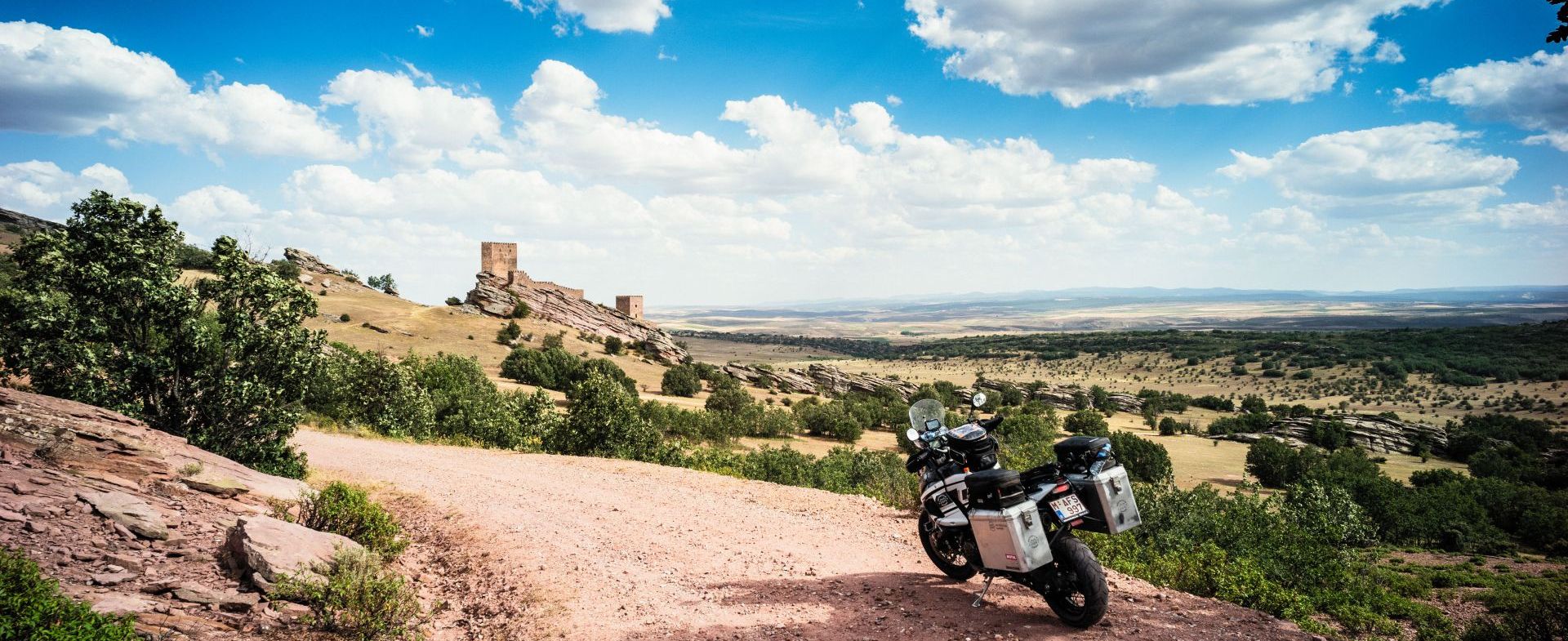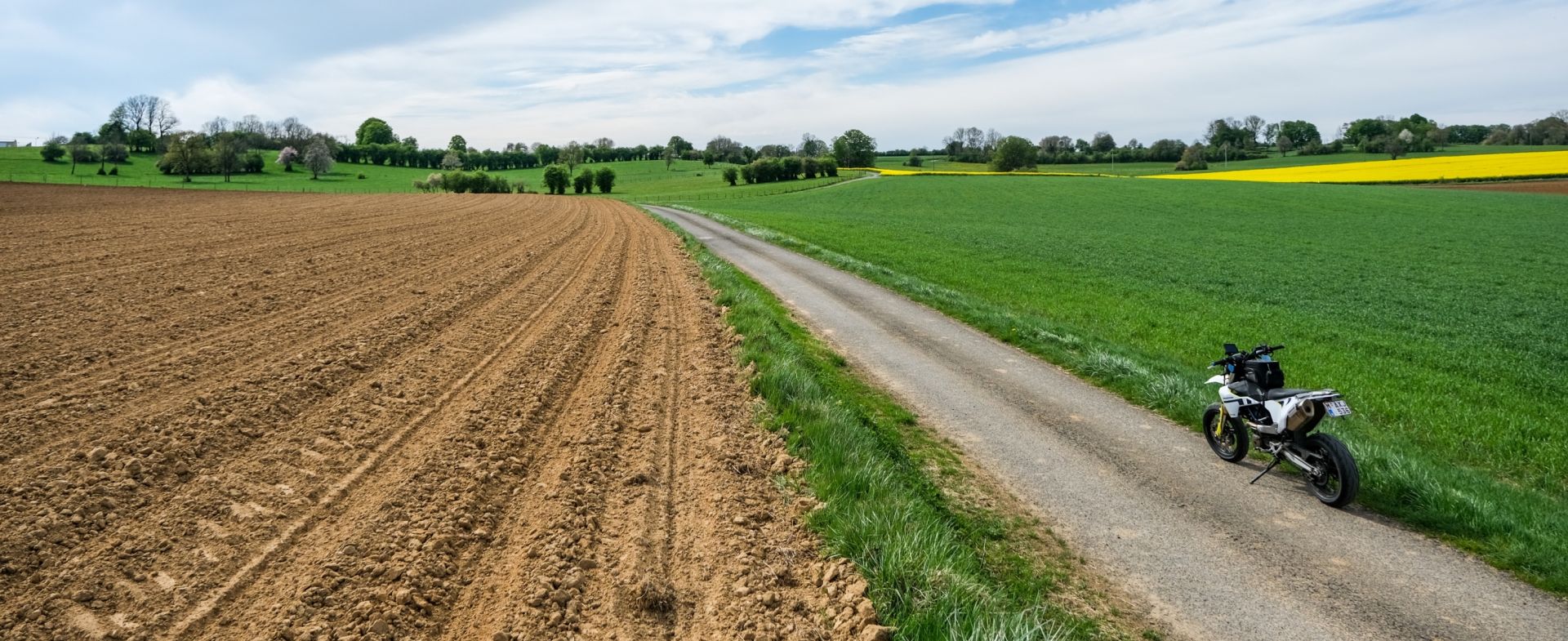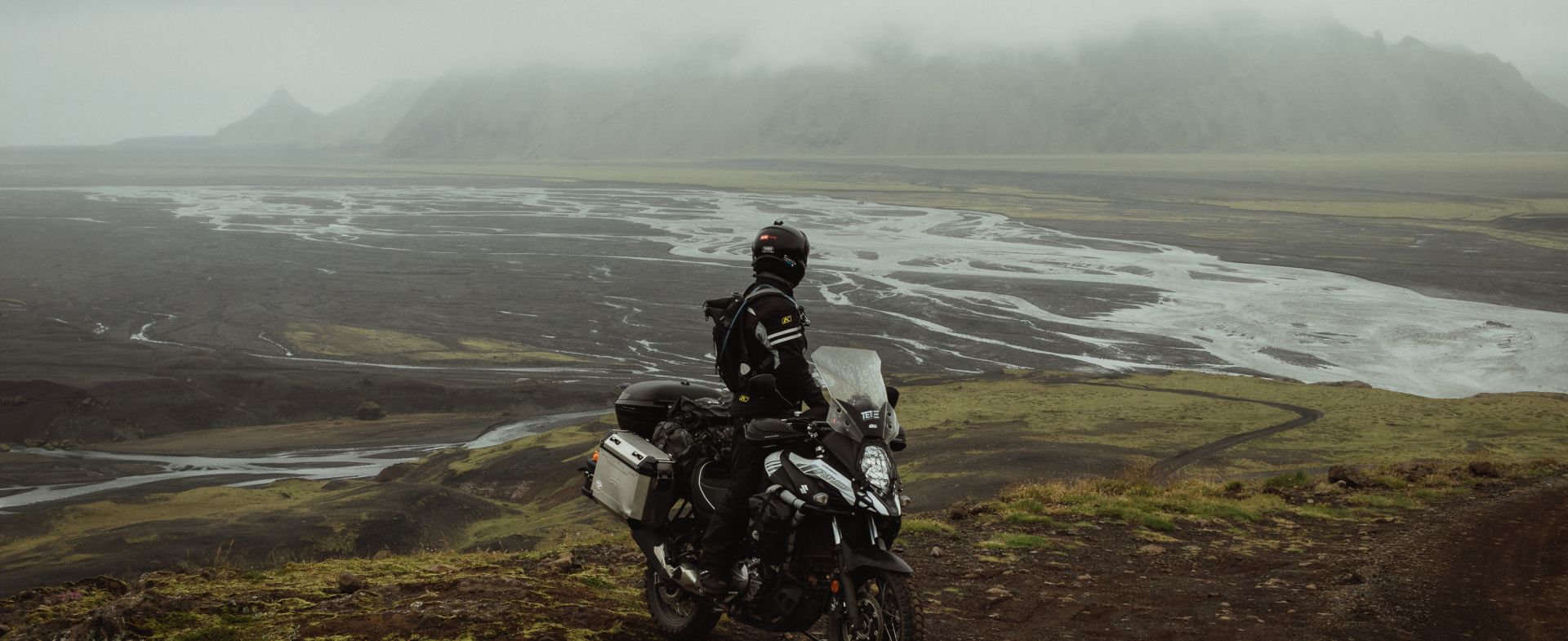So you’ve prepared your beloved bike, linked a bunch of Motorcycle Diaries Roads into a magnificent chain to your destination, and the itch to leave is getting under your skin. But have you packed all the mandatory stuff to meet legislation abroad - on the road and at your journey’s end? No need to worry, we’ve prepared a checklist for your trip in the most desirable destinations in Europe, just to be sure.
Legislation abroad: what you need to know when riding in foreign countries!
Motorcycle Diaries
Do's, don'ts and must-haves for your next ride abroad!
In general
First the rather obvious ones: in each of the countries listed below, you absolutely need to bring along your driving licence, vehicle registration, ID Card or passport and an International Motor Insurance Card - a Green Card. Furthermore, any of the following countries requires motorcyclists to turn on their headlights, even in daylight.
Some documents or gear are not mandatory - but they might bring you peace of mind when riding abroad. Foresee the unforeseeable, right? Although you’ll be fine with your national driving permit, it might be a good idea to get an international driving permit at the local government offices.
It’ll cost you around 20 to 30 euros, but this way you will have your entitlements in a number of languages, helpful should you need to show your licence at any time.
To avoid stressing out when your wallet gets lost or stolen, we’d advise you to take copies of your registration document, insurance, and letter of authority to use the bike if it is not yours - and keep them stored under the seat of the bike or in an extra pair of shoes.
Proof of their existence might save you from a heap of trouble during an encounter with the enforcers of law.
As well as credit cards, make sure you have plenty of Euros with you especially if you are travelling to more remote areas where they may not take cards at petrol stations or cafes.
If you are not fluent in the local language, a phrase book is a useful addition to your luggage, as well as a small First Aid kit for dealing with minor ailments like stings, cuts and burns. One never knows.
Spain
Legislation in Spain is as easy-going as its inhabitants: only operating cell phone (duh!) or navigation while riding is prohibited. Just make sure to take an extra pair of glasses in your luggage - you never know when you might need them.
France
Although most GPS's have a built-in ‘filter’ for France, which just hints there might be a speed check around, the use of more specific speed camera tell-tales is prohibited and harshly punished. So make sure to hide or switch off your Coyote before crossing the French border.
There’s quite a list of mandatory gear to legally be riding a motorcycle in France. Before all, make sure to carry a high visibility jacket and to stick some reflective stickers on your helmet. If there are no reflective stickers on the helmet, it is not approved and substantial fines may be imposed or your motorcycle may even be temporarily taken out of use.
Also drag along a pair of spare glasses, an alcohol test, and the necessary emission stickers - the so-called vignettes Crit’Air are mandatory in several French cities.
British Isles
While using a speed camera tell-tale or overtaking lines of traffic don’t pose any problems in the UK, parking your bike on the sidewalk seems to be a major problem. So be polite in the British way and temporarily store your beloved machine in the foreseen parking spaces.
The London Congestion Charge does not apply to motorcycles (for the time being). But then again, why would you aim your bike towards the capital if the true treasury of the country is situated miles and miles away from the metropolis? Right.
Norway
Up north, you might be pleased by the fact that the Norwegian government will let bikers use the bus and taxi lanes (if indicated), as long as you do them the favor of dragging along a high visibility jacket in your emergency kit.
Although in Norway a toll is charged on almost every road - not only on motorways but also for using many main roads, tunnels, and bridges, and also access roads to some cities - it is usually free for motorbikes! Hooray!
Less hooray: the fact that fines are income-related, and usually very (very!) expensive. So don’t text and ride, don’t drink and ride (a no-brainer, actually) and don’t speed. You’ve been warned!
Germany
As easy-going Germans are on speed limitations on the Autobahn, make sure to leave that DB-killer where it’s supposed to be: exhaust sound can under no circumstance exceed the E-normation.
We’ve heard about rather high fines and even horror stories about tow-aways from people trying to blitzkrieg their way through with an open exhaust… Another thing Germans don’t like is lane-splitting: it’s prohibited by law, and German drivers are known to be very cringy if you try it anyway.
Those who like to grab a beer during lunch, beware: alcohol limits in Germany are set at 0.05% (50 mg/100 ml blood), but there’s a zero tolerance for riders younger than 21 or riders who haven’t been riding longer than two years.
Italy
If you’ve ever ridden your bike in Italy, you might be surprised there is such thing as Italian motorcycle legislation at all. But there is, and quite a severe one too, actually. Starting off with the shell around your head: only helmets which conform to the ECE 22-05 standard are approved.
The test seal/label must be attached in the helmet and must be accessible for inspection at all times. Any infringement can incur a hefty fine with the additional possibility of your motorbike being confiscated for up to 90 days.
A high visibility jacket is mandatory, a toll is payable on most motorways and there are extra environmental taxes in a lot of cities, but the legislation is very complex and diversified - so you might want to ask local riders for tips. Strangely, there are different maximum speeds for beginners (less than three years of experience): on ‘blue’ motorways that’s 90 km/h instead of 110 km/h, on ‘green’ motorways that’ll be 100 km/h instead of 130 km/h.
Portugal
The Portugal motorcycle law is firm: you cannot use dashboard- and action camera without governmental permission. Due to privacy legislation, filming and saving footage of people is only allowed if you have obtained a permit from the Portuguese Data Protection Authorities.
The fines for disobedience are substantial (up to 1.500 euros).
Slovenia
Before feasting your eyes on the marvelous scenery of Slovenia, make sure to buy a vignette (toll-sticker) - as it is mandatory on all motorways and dual carriageways - as well as a set of spare lightbulbs for your motorcycle.
And maybe a measuring instrument, while you’re at it: because parking on the sidewalk is allowed, but only if you leave exactly 1,60 meters for pedestrians to pass. And especially make sure you don’t park where you’re not supposed to: Slovenian police is known for using wheel clamps on motorcycles as well...
Austria
As in its neighboring country, a vignette (toll sticker) is required for most motorways and dual carriageways in Austria. A toll is also payable for using various tunnels and mountain roads.
The Austrian police are known to perform a lot of checks at the border. Motorcycles must also carry a first-aid kit containing suitable wound dressings, packed in a dust-proof packaging.
As it is the case in Portugal, the use of dashboard- and action cameras is prohibited, due to a general prohibition to film people unknowingly. We don’t expect any problems in desolate mountain ranges, but you might want to hide them in urban environments.
If you get busted, you might end up with a substantial fine. Just beware.
Furthermore, overtaking lines of traffic on the Autobahn is only allowed when the - only when the cars and trucks are at a complete standstill.
Switzerland
A true motorcycle heaven, but a bikers’ hell if you don’t behave by the strict legislation. Apart from the prohibitions on lane-splitting (not even if the traffic is at a standstill at stop lights or bridges) and riding alongside one another, you really should not speed. Just don’t.
The fines are income related and massive, starting at a few hundreds of euros but steeply rising in the thousands and even jail time for severe speeding. You’ve been warned. To make things even more difficult, you can’t by any means use
speed camera tell-tales - you can’t even have them on your navigation hardware! Be very careful if you do, the fines for infringements are hefty.
Police are also checking at all times whether you’ve bought the appropriate vignette (toll-sticker), which is required for most motorways and dual carriageways. A toll is also payable for using the Great St.Bernhard tunnel and the Munt la Schera tunnel.
Oh yes, don’t forget to honk your horn when approaching a blind corner in the mountains. Unless you like encountering angry Swiss people.
Croatia
We can be rather short on Croatia: you’re obliged to carry a spare set of lightbulbs for your bike, and if you plan on riding the motorways, you’ll need to pay toll - except for the motorway in Zagreb. Various tunnels and the bridge on the island of Krk also charge a toll.
See more information on the FEMA site.
Where next?
Explore the best roads around and plan your next trip based on those roads.


















